Achieving Absolute Fretboard Mastery, Part 6
Learn the six functional chords that operate within the context of a diatonic scale.
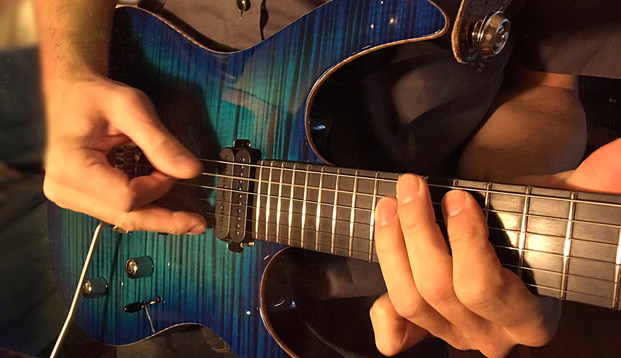
Hey, guys! Welcome back to the sixth installment of my current series, Absolute Fretboard Mastery!
Today we’re going to simplify and understand an extremely important part of music theory: chord progressions. Like all the knowledge areas we’ve covered so far in this series (See RELATED CONTENT to the left), I’m going to explain this in the simplest of terms so you can achieve a thorough understanding and absolute mastery of this concept. This will, in turn, help you as you get deeper into music theory and start applying this knowledge in your own music.
In last month’s lesson, we learned about expanding the pentatonic scale into a diatonic scale by adding two tones. In this month’s lesson, we’re going to learn the six functional chords that operate within the context of a diatonic scale. In simpler terms, if we were to play something in G major, we’re going to learn the six chords we can use to build various chord progressions within this key.
Let’s start by talking about what is referred to as the I IV V chord progression in the key of G major. I want to start off with this particular key because it’s very common and used in a lot of country and rock music.
If we were to take the key of G major, the first five tones that are in this key are G, A, B, C and D. So the I, IV and V chords are G, C and D.
Before we get too deep into the musical theory behind this, I want you to familiarize yourself with how these three chords sound together. Go ahead and start playing around with them in different orders, familiarizing your ear with how these progressions sound. For starters, we’re going to keep things simple and first learn the I IV V chords for the following keys:
- IIVV
- AED
- CFG
- DGA
- EAB
- GCD
Again, when learning these basic I IV V chord progressions in these five keys, I want you to play them together in various orders to familiarize yourself with what they sound like.
All the latest guitar news, interviews, lessons, reviews, deals and more, direct to your inbox!
Another thing you’ll start to notice at this point is that everyone from Van Halen to AC/DC to Van Morrison uses these basic I IV V chords in their tunes. And the cool thing about this is that just by learning these basic I IV V chords you’ll be able to jam along to a lot of simple songs.
And if you’re ever in a situation where you’re asked to jam over an unknown piece of music, you’ll have a rough guideline on what to play. For example, if you know you’re jamming in G major, you’ll know you’ll most likely be playing a C and a D at some point.
Next, we’re going to add the VI and II and III chords into these progressions. But before we get into that, there's a basic idea I want you to learn. Whenever we’re in a major scale, I IV and V chords are always major, and the II III and VI are always minor. This changes when we start talking about minor scales and modes, but that’s further down the line. So, for now, remember that whenever you play in a major key, the I IV and V chords are always major and the II III and VI chords are always minor.
Let’s start off with the VI chord, which often is used prolifically in any chord progression. If we take the key of G major, we have C and D, which are our IV and V chords. And then we have E minor, which is our VI chord.
Next, let’s consider the II and III chords, which are also minor. In the key of G major, the first six tones we have are G, A, B, C, D and E. So our II and III chords would be A minor and B minor.
When we move into keys like F major, we start to come across flats and sharps, which can complicate our learning process. This is why I want you to start off with these five basic keys of A, C, D, E and G.
The next thing I want to run you through is a little visualization technique involving your barre chords that will help you visualize these chord progressions across your fretboard.
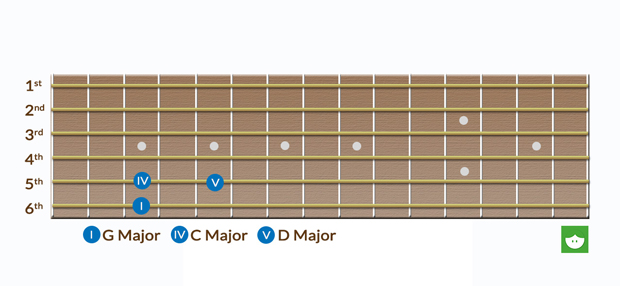
So in effect, wherever your I chord is on the sixth string, your IV chord is underneath you on the next string and your V chord is simply two frets higher.
What’s great about this visualization is that when you need to play in a different key, all you need to do is move the same pattern toward whichever key you need to play in. For example, if you need to play in the key of A major, all you’d have to do is move this pattern up a couple of frets.
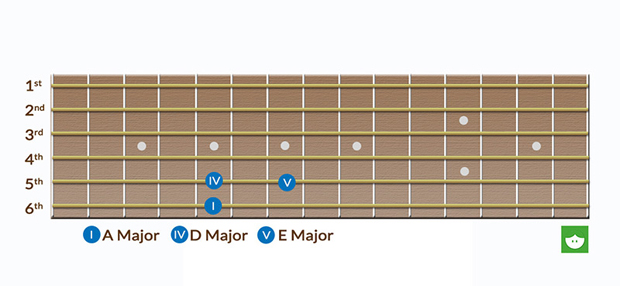
And if you ever need to play in an awkward key like A flat major (when you might not know the IV and V chords), by learning this visual pattern, you’d still be able to play in this key and figure out what your IV and V chords are after actually playing them. Next, let’s add the VI, II and III chords into this same visualization.
So if we were to go back to the key of G major, where our I IV and V chords are G, C and D, our VI chord, which is E minor, is simply two frets higher from the V chord.
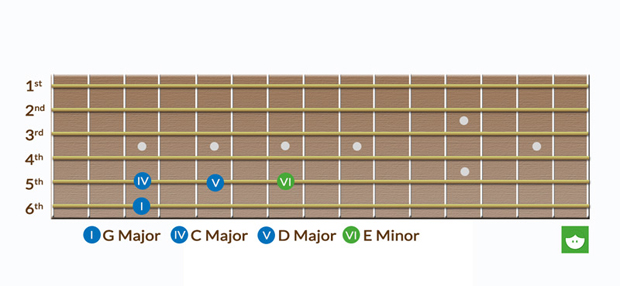
Again, the only thing you’d need to play in a different key, say F major, for instance, is move this visual pattern to that position.
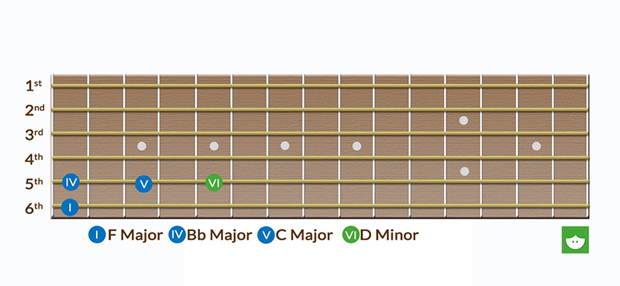
Last but not least we have the II and III chords, which in the case of G major are A minor and B minor. So our II chord is simply two frets higher from our I chord and our III chord is two frets higher again from the II chord.
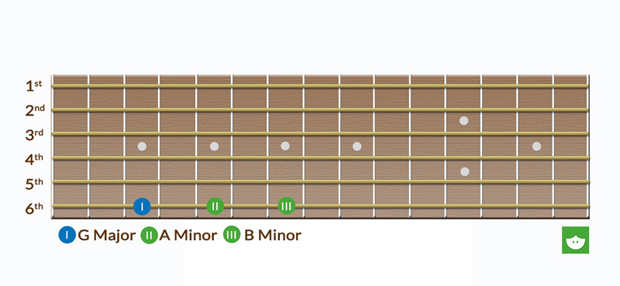
Once we put this all together, we end up with a box-shaped visualization that can help us figure out the I, II, III, IV, V and VI chords in any major key.
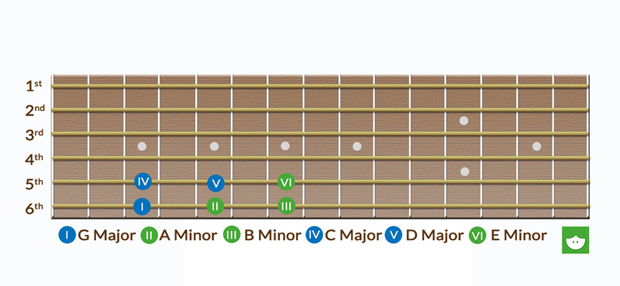
By memorizing this pattern and remembering that the I IV and V chords are always major and the II III and VI chords are always minor, we can pretty much play in any major key we want while learning the exact chords in the key after actually playing them.
The last thing I want you to do this month is to combine what we learned today with what we learned last week with the diatonic scales. Say we have a I (C), V (G), II (D minor), IV (F) chord progression in the key of C major that you want to solo over; you can meander over this chord progression using the C diatonic scale while paying attention to your phrasing and pausing, etc.
So as always practice hard and work on internalizing everything we’ve learned so far. This way, as we move through the lessons for the next few months and get deeper into chordal and scalelular theory, you’ll be able to draw on this understanding and make more sense of the more advanced bodies of knowledge.
Steve Stine is a longtime and sought-after guitar teacher who is professor of Modern Guitar Studies at North Dakota State University. Over the last 30 years, he has taught thousands of students, including established touring musicians, and released numerous video guitar lesson courses via established publishers. A resident of Fargo, North Dakota, today he is more accessible than ever before through the convenience of live online guitar lessons at Lessonface.com.
